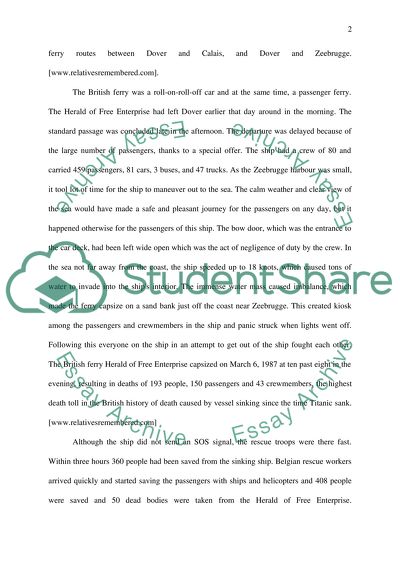Cite this document
(“Zeebrugge Ferry Disaster (1987) Essay Example | Topics and Well Written Essays - 2000 words”, n.d.)
Zeebrugge Ferry Disaster (1987) Essay Example | Topics and Well Written Essays - 2000 words. Retrieved from https://studentshare.org/miscellaneous/1525369-zeebrugge-ferry-disaster-1987
Zeebrugge Ferry Disaster (1987) Essay Example | Topics and Well Written Essays - 2000 words. Retrieved from https://studentshare.org/miscellaneous/1525369-zeebrugge-ferry-disaster-1987
(Zeebrugge Ferry Disaster (1987) Essay Example | Topics and Well Written Essays - 2000 Words)
Zeebrugge Ferry Disaster (1987) Essay Example | Topics and Well Written Essays - 2000 Words. https://studentshare.org/miscellaneous/1525369-zeebrugge-ferry-disaster-1987.
Zeebrugge Ferry Disaster (1987) Essay Example | Topics and Well Written Essays - 2000 Words. https://studentshare.org/miscellaneous/1525369-zeebrugge-ferry-disaster-1987.
“Zeebrugge Ferry Disaster (1987) Essay Example | Topics and Well Written Essays - 2000 Words”, n.d. https://studentshare.org/miscellaneous/1525369-zeebrugge-ferry-disaster-1987.


